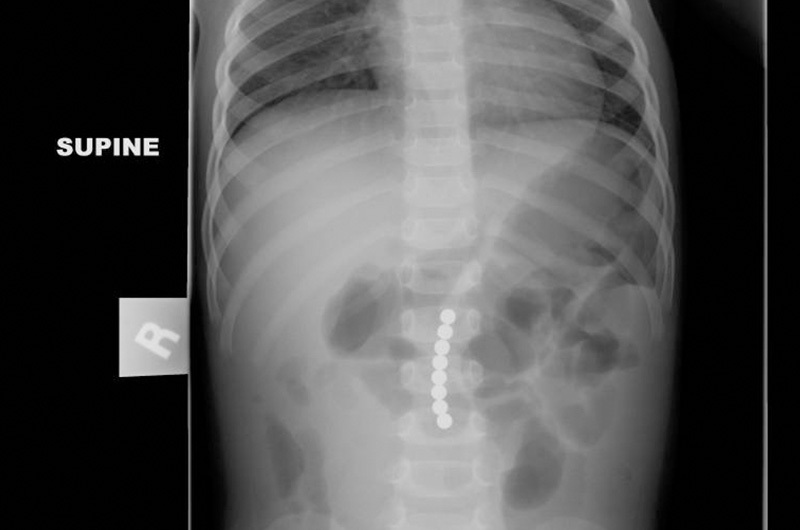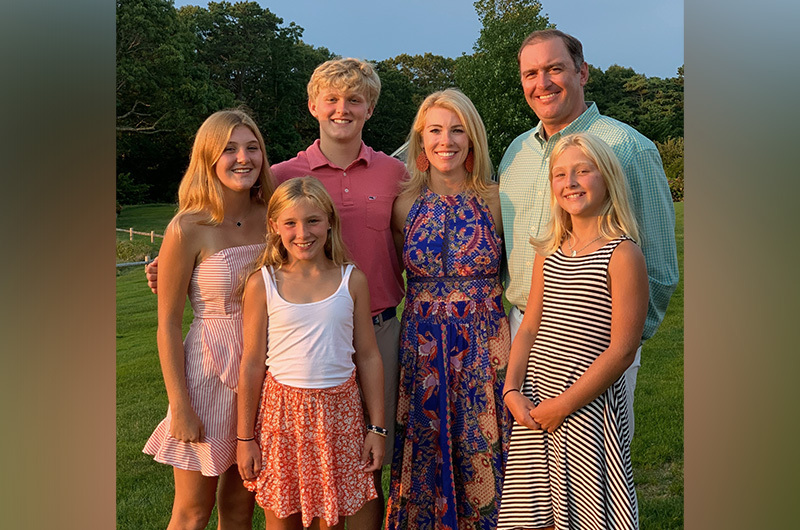Avoiding a dangerous attraction to magnets: Lainey’s story

A few days before Valentine’s Day in 2013, 2-year-old Lainey Styles wasn’t feeling well. She had vomited, was lethargic, and had a fever. After visiting the pediatrician, her mother Jessica thought Lainey had a stomach virus. But the appearance of a softball size bruise around Lainey’s belly button a couple of days later prompted her to take Lainey to the Emergency Department at Boston Children’s Hospital.

The family would soon learn that the cause of Lainey’s illness was life-threatening. She had swallowed eight tiny, super-strong magnets, known as Buckyballs. Instead of passing through Lainey’s body, the magnets stuck together, pinching the linings of her stomach and intestines in six places and allowing the contents of both to spill into her stomach. Lainey had a serious infection.

Even with surgery and intensive antibiotic treatment, Lainey had to be monitored closely for 11 days in the hospital to be sure the infection cleared.
Emergency room visits led to regulations
Lainey is just one of thousands of children who have been treated in emergency rooms across the country after ingesting these small (3-6 mm), but ultra-powerful magnet sets. Made of neodymium, iron, and boron — and known as rare earth magnets — they are five to 10 times more powerful than the usual magnets you may use on your refrigerator.
Beginning in 2009, rare earth magnets hit the market as desktop fidget gadgets and immediately became a serious health risk for children. As a result of thousands of near-misses and some deaths in children, in late 2014 the Consumer Products Safety Commission (CPSC) announced safety regulations limiting their sale. CPSC is the U.S. federal regulatory agency tasked with protecting the public against unreasonable risks of injury or death from consumer products.
As a result, the number of children seen in emergency departments after swallowing these magnets has dropped substantially nationwide, as shown in a new research study from Boston Children’s and Massachusetts General Hospital.
“It was a clear connection. Before the CPSC regulations were in place, emergency department visits due to magnet ingestion increased every year from 2009; they reversed direction immediately after the CPSC rules took them off the market,” says senior study author Dr. Lois Lee of Boston Children’s Division of Emergency Medicine.
Turning back the clock
But in 2016, CPSC dropped the safety regulations, once again allowing sale of these magnets under a variety of different brands and designs. Not surprisingly, related visits to the emergency department again increased across the country for all children, but especially in those five years and younger. The trend continues to the present day.
“It is clear from our results that warning labels are not enough. More needs to be done at the federal and industry level to protect our children from this danger,” says study author Dr. Michael Flaherty, a pediatric critical care physician in the Pediatric Intensive Care Unit and director of the Trauma and Injury Prevention and Outreach Program at MassGeneral Hospital for Children.
Thoughts from Lainey’s surgeon
We asked Lainey’s surgeon, Dr. Terry Buchmiller, who is also an author of the research study, about her experiences with these magnets in children.
What do you typically see when you operate on child who has ingested ultra-strong magnets?
If the magnets get pulled together it crushes the intestine in between. We usually find very inflamed bowel, with holes in it, as well as infection if there has been leakage. The infection can be severe and life-threatening.
What are the most common symptoms before diagnosis?
Abdominal pain and swelling, vomiting, lethargy, and fever.
What are the most common ages you see? It ranges from toddlers to teenagers, but more commonly it’s the younger children about age 2 and younger. Most of the time no one knows these were swallowed so it can be a big surprise!
What are your recommendations for parents? If you absolutely must buy them, be very careful to make sure they are never swallowed or left out so that a smaller child or pet could accidentally swallow them. Consider locking them up!
Be aware during holiday shopping
As the holiday shopping season approaches, Drs. Lee and Flaherty strongly suggest avoiding buying magnet sets if you have children under the age of 14 in the house.
“These magnets are far from harmless if more than one is swallowed,” says Dr. Lee. “They are incredibly small and should be kept out of sight and reach of very young children.”
Jessica Styles wishes she knew about these serious dangers back in 2013. She bought the magnet set for supervised use by her older children and kept it on top of a tall bookcase.
“Even with our awareness and taking precautions, Lainey still managed to find them and swallow eight magnets,” says Jessica. “And over the years I have still found a few in the house.” One was inside the washing machine and another attached to the vacuum. Fortunately, Lainey has recovered fully and is now a healthy, 9-year-old fourth grader.

The team’s recommendation for those involved in consumer product safety regulation is simple: Bring back the CSPC regulations limiting or preventing sale of these ultra-strong, rare earth magnet sets.
“We’ve seen that industry regulations work around these products to prevent serious injuries and deaths,” says Dr. Lee. “It’s essential these safety standards are restored permanently.” The authors also urge primary care physicians to be aware that these regulations are no longer in place and demand a return of safety standards.
Learn more about our Division of Emergency Medicine.
Related Posts :
-

Changing lives through genetics: The Children’s Rare Disease Collaborative
A 14-year-old girl was having back pain after a car accident and visited an orthopedic clinic at Boston Children’s ...
-

Injected microbubbles could be a safe way to deliver emergency oxygen
For years, researchers and clinicians have been trying to find a way to rapidly deliver oxygen to patients when traditional ...
-

Making pediatric health equity research truly equitable: An EDI review process
A burgeoning number of studies are examining pediatric health equity, diversity, and inclusion (EDI). But if not done right, health ...
-

Emergency department or urgent clinic? Understanding your options if your child is injured
Having an active or adventurous child often means comforting them when they come home with bumps or bruises. But when ...





